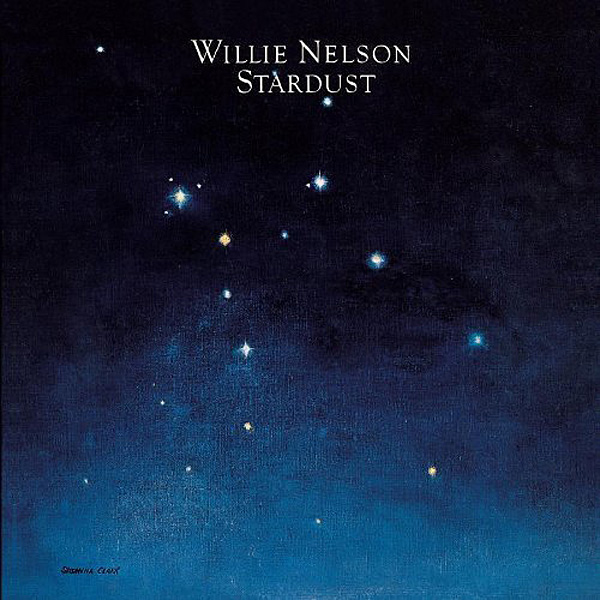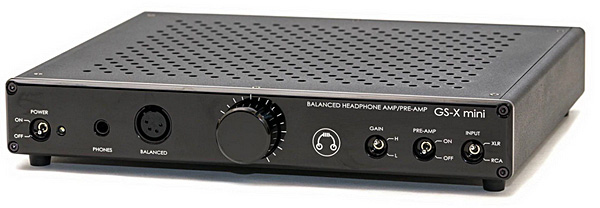| Columns Retired Columns & Blogs |
Great review! How good is it as a pre-amp? Thanks.

After listening to fewer than a dozen tunes with the hybrid pads, I played the dreamy drum-synth and poetry-reading tracks from Brian Eno and Rick Holland's 2011 collaboration Drums Between the Bells (16/44.1 FLAC, Warp Records/Tidal). That's when I realized that something about the hybrid-pad sound wasn't sitting right with me. What I was hearing was attractive and detailed and clear in a manner that I think most audiophiles would appreciate, and I did not mind the reduced bass or highlighted vocals. What bothered me was how the thick pads reduced the trailing part of bass-note decay. In turn, this made for a dryer (less atmospheric) form of transparency and a condensed illusion of deep space. Because I revel in deep transparent spaces and luminous darknesses, I decided to stick with the all-leather pads for the remainder of my auditions.
Elite vs RAAL
I used RAAL's HSA-1b headphone and speaker amplifier (see Gramophone Dreams #53) to drive RAAL's own SR1a pure full-range ribbon headphones as well as the Meze Elite planar magnetics. In my system, the HSA-1b amp generates more bloom and tone color, and has an especially natural way with voices when sourced by the Denafrips Terminator Plus digital converter, so I chose that as my source.
I began my comparisons assuming the game was rigged: RAAL's HSA-1b was engineered to make RAAL's SR1a sound as clear and dynamic as possible through its own dedicated high-current output. (The SR1a shows only a 0.2 ohm load impedance, including cabling.) Fortunately, the HSA-1b's separate, "regular headphone" 6.3mm output has good amp mojo; it made the Meze Elite sound solid (image-wise) and punchy-dynamic!
With the RAAL amp, "Ceremonial Procession" and "Do Not Kill Your Children (Chorus III)," from Medea by Eleni Karaindrou (24/96 FLAC, ECM/Qobuz), the Elite generated more flesh and bone than it did through the Pass Labs HPA-1 or the LTA Z10e.
Because of the fleshiness of the Elite/RAAL-amp combination, rhythms displayed a good amount of foot-stomping boogie'n'flow. Low bass played tight and went deep.
Unfortunately, the joy of the Elite's RAAL-amplified punch and density was offset by a reduction in transparency and spaciousness compared to the Pass and LTA amps.
Sequence is everything. When I switched from the open-back Meze Elite to the dipolar (open-front and -back) SR1a, the RAAL ribbons sounded quicker and more vibrant—more alive, less loudness-compressed, less in-my-head—than the Meze planar dynamics or any other headphone in my stable, including the incredibly quick and open Audeze CRBN electrostatics.

I was listening with some disappointment to a 24/88.2 (FLAC) Qobuz rendition of Willie Nelson's epic "Stardust," from his 1978 album of the same name. The sound through the RAAL ribbons was sharp and focused and clearly high-rez digital—but in the worst sense of both terms. To me, Willie Nelson is the Mel Tormé of country singers, but here, his voice sounded brittle and harmonically stunted, lacking the rich, nasal resonances that make Nelson's one of the most distinctive voices of his (and my) era. Through the SR1a, the highs, especially those from the harmonica, felt metallic, with a razor's edge. When I played the 24/88.2 Qobuz Stardust through the Meze Elite, the hardness I was perceiving through the SR1a disappeared almost completely, but the digititus remained.
My curiosity aroused, I switched DACs and played Tidal's MQA version of Stardust through the dCS Bartók DAC, the Bartók feeding the HSA-1b amplifier, driving the Elite. The sound was now richer and velvety smooth. The Willie I love was now closer to the beauty of the analog version (LP, Columbia 35305). The Bartók, which plays MQA better than any other DAC I know, made Stardust richer and velvety smooth, with the help of the velvety smooth Meze headphones.
Compared to the high-vibrancy high-rez ether-like clarity of the RAAL ribbons, the Meze sounded smoother, more nuanced, kinder to singers, and easier on the mind.
Compared to other "elite" headphones
The next headphone I felt I must compare to the Meze Elite was Dan Clark's Stealth closed-back planar magnetic, which is priced the same (a penny less than $4000). I reviewed the Stealth in Gramophone Dreams #62. As of May 2022, the recently introduced Stealth and the Meze Elite present themselves as the hottest new stars on the head-fi stage. Both look hip and style-savvy. Both offer exceptional comfort. And both flesh out recordings with extraordinary verisimilitude.
Meze describes the Elite as open-back, but to me it looks and plays like a closed-back. When I covered the cups with my hands, I heard no difference. The Stealth is obviously closed-back. The biggest technical difference between the Stealth and the Elite is this: At 86–87dB/mW with an impedance of 23 ohms, the Stealth is considerably less sensitive than the Elite, which is specified at 101dB/mW. The Elite's specified impedance is 32 ohms.
With the HeadAmp GS-X mini Balanced headphone amplifier
HeadAmp's GS-X mini Balanced headphone amplifier/preamp ($1995, footnote 3) is based on the larger, two-box GS-X mk2, but it's said to be the first HeadAmp product to "deliver balanced headphone drive from all sources, single-ended or balanced." It offers both potentiometer or optional stepped-attenuator volume controls and is specified to output 6W of power into a 25 ohm load.

Driving the Elite with the GS-X mini with the dCS Bartók as the source, I used "Shine" and "Loping," the first two tracks on saxophonist Walter Smith III and guitarist Matthew Stevens's collaboration entitled In Common III (16/44.1 FLAC Whirlwind Recordings/Qobuz), to see what Stealth–Elite differences jumped out. Chief among them: Music through the Stealth possessed more corporality. Walter Smith's sax appeared bigger, more powerful, closer to the microphone, and less blended with the piano and guitar. With the Stealth, instrumental tracks seemed more separate from each other. Raw dynamics dominated the experience. Best of all: The Stealth–GS-X mini combo uses its rousing vigor and well-sortedness to make large symphonies and motion picture soundtracks sound exciting.
In contrast, the Meze Elite did a better job transmitting the subtler aspects of vocal and instrumental tone and allowed vocalists to sound more like themselves. The Elite played the small stuff—room air, singer's breath, fingers on strings, toes on pedals—better than the Stealth did.
With the Meze reproducing "Shine" and "Loping," Dave Holland's bass lines bumped and flowed past Walter Smith's sax, which in turn merged harmonically with Holland's bass in a way that allowed these tracks to move and morph together. With the Elite, the arrangement of instruments in space seemed more fused, less separate.
These differences were subtle, though fundamental. It is fair to say that the Meze and Dan Clark flagships sounded more alike than different and more like each other than other headphones at this elevated level of price, sound, and engineering.
Switching to tubes
After getting a good feel for the Elite with the RAAL HSA-1b, HeadAmp GS-X mini, and Pass Labs HPA-1 amps, I decided to hunker in the Bunker with Linear Tube Audio's Z10e amplifier and, then, finally, to see how the Elite compares to Audeze's CRBN electrostatic headphones.
I first encountered the teachings of Russian philosopher G. I. Gurdjieff in the 1979 Peter Brook film Meetings with Remarkable Men. Ten years later, I read P. D. Ouspensky's description of "The Fourth Way" in In Search of the Miraculous. But it wasn't until earlier this year that I discovered Gurdjieff, Tsabropoulos: Chants, Hymns, and Dances (16/44.1 FLAC, ECM/Tidal), an inspiring ECM recording by cellist Anja Lechner and pianist Vassilis Tsabropoulos featuring music composed by Gurdjieff and Georges Ivanovitch.
I am digging this album now because I only recently discovered Gurdjieff "s compositions and how wonderfully this recording passes through Audeze's $4500 CRBN electrostatic headphones. Playing Chants, Hymns, and Dances, the CRBN's bell-like purity of tone makes my other headphones seem dull and slow.
Electrostatic headphones occupy a special place in my listening studio. Their blur-eliminating superpowers remind me of what I see through my new eyes: a bright, extremely detailed, hyper-focused world. So naturally, I was curious to see how the Meze Elite's dark, detail-rich presentation would compare with that of Audeze's premier electrostatic.
Playing Chants, Hymns, and Dances through the Meze Elite became the defining moment of this review. Until then, the Elite had played everything with a sort of understated sophistication, but now—wow! Through the Meze, that fancy ECM reverb felt like an expanding energy field pulsing just outside my head. The sense of real energy transmitted by the Elite during the sustain and decay of Vassilis Tsabropoulos's close-miked piano notes caused me to close my eyes and rock back and forth. Sourced from the Denafrips Terminator Plus (in NOS mode), the Meze Elite played these Gurdjieff compositions in a manner that far exceeded my expectations.
After scores of listening hours, using a variety of sources and amplifiers, I had now discovered something exciting and important that I would never have learned from a quick, noisy CanJam audition. On the Vassilis Tsabropoulos compositions "Dance" and "Chant," the energies associated with note decay and reverb were reproduced more completely—dare I more thrillingly—than they were with $6000 HiFiMan Susvara through the same Z10e amplifier. That's a huge accomplishment. Throughout this magic album, the Elite played voices and the whole piano keyboard with a precision and a vibrant, true-toned explicitness that I hear only from the most cutting-edge headphones.
At the end
Whenever the Meze Elite was not dazzling me with subtleties or forcing me to pause and admire its cavernous spatiality, it was simply playing music and feeling just right. There were moments while I listened, when I could see Antonio Meze's face (I recognized him from a photo on the Meze website) and hear him saying, "Look! This is how I believe a headphone should be made. These are the pleasures I've decided to give you." The Meze Elite is an elite headphone, comparable to the best at any price. Class A+.

Great review! How good is it as a pre-amp? Thanks.

I will soon be discussing the GS-X at greater length. So far though, I have not compared it to the Serene in the big system. But I will.
h

I just sent in my set of hearing aids for their last warrenteed maintenance servicing and have now the new top-of-the-line model as loaners
With an updated "Music" program, I seem to be listening to a "brand new", improved stereo system!
I wonder how many others out there can use such an "upgrade"?
Now I wonder when my hearing aids are returned, if I'll like my stereo system as much, or.....?
Or put another way, is the "upgrade" worth $6K?

Herb, thanks for your brief article in the most recent Stereophile on the effects of your cataract surgery. I recently had the same procedure, and you described the effects beautifully. Friends with whom I shared the article felt the same.

for a most meaningful compliment.
all I can do is 'try to describe'
and now I have fancy glasses to help
A toast to good eyes!
herb

I'll drink that toast with you!
Now I have $1.47 reading glasses from Walmart and $5 Amazon frames for computer work. Beats paying hundreds of dollars to an optician every couple of years!

Hi
Thank goodness. In the place I live, optician eye test & cataract surgery are free. covered by our government here. No need any medical insurance at all !
Eye glasses, cheap or expensive, get nothing to do with having cataract or not. It's a health issue.
Nearly all my folks & friends of my similar age or younger, already got their cataract removed. I am thankful my eyes are still sharp & bright as per my optician report me last year: no need any cataract surgery in few years.
Lucky duck am I ? I don't think so.
To keep my eyes healthy, I take nutritive food for my eyes!
In every breakfast at home for many years now, I stir in some 15 wild blueberries (available from Costco) into my soy milk & blueberry jam spreaded on my toast. Why? Blueberries are very rick in anthocyanin which makes our eyes healthy.
No free lunch, my friend !
Jack L

..."see", Jack.
How ignorantly boastful and ableist of you!

https://www.analogplanet.com/content/two-months-widexs-moment-440-mric-r-d-hearing-aids

Even with older technology...
https://www.analogplanet.com/content/two-weeks-zvoxs-vb20-voicebud

Which blinds did Brian make you see? The Venetians?
I had an uncle with powers like that. He once cured a ham, and then made a blind man deaf. After a while, people stopped asking him for favors.
If anyone ever met Al Stiffel, he rocked his acuity with hearing aids. Seems like a non-problem getting the Jack L treatment.